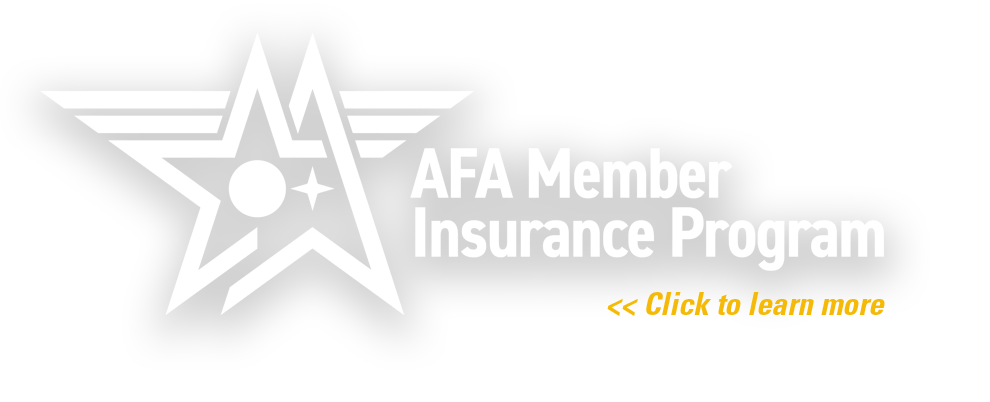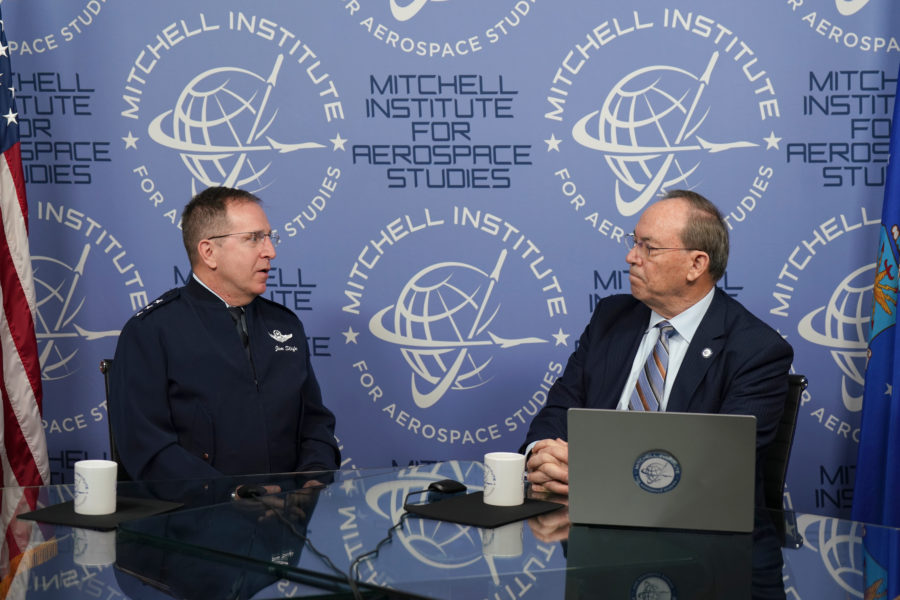The Air Force wants its pilots comfortable shifting between Active, Air National Guard, and Air Force Reserve to accommodate life events. But to do this, the USAF must “get our house in order,” deputy chief of staff Lt. Gen. James C. Slife said during a webinar hosted by AFA’s Mitchell Institute for Aerospace Studies on Feb. 21. He also said the service is building metrics to better determine how budgetary issues can affect readiness—particularly flying hours.
Slife said USAF must do all it can to retain pilots in the face of a years-long pilot shortage and is willing to let pilots move between components, but the red tape of such moves is formidable.
“We want to make it as easy as possible for pilots to be able to spend time in the Active Duty, spend time in the Guard, spend time in the Reserve, and move back and forth, based on where they are in life,” Slife said, noting increased mobility between components is key to the Air Force’s retention strategy. “We all have life events and it might be easier for somebody to manage their life events not by leaving the Air Force but by just associating with a different component.”
But he added that it will take a determined effort to navigate the bureaucracy.
“We’re looking at where are all the policy shortfalls are,” he said. “Maybe it’s harder than it needs to be.”
While the issue is more difficult for the Guard, as they utilize state assets, Slife said for the Air Force Reserve, it’s a matter of working through policy issues.
If necessary, the service will go to Capitol Hill and seek legislative changes to make mobility easier, “but we’ve got to get our own bureaucratic house in order, smooth that out,” he said. Still, he noted some pilots have successfully navigated those bureaucratic hurdles.
Slife also said it’s crucial for the Air Force to persuade pilots to stay when their commitments expire, and those who elect to leave—even when offered significant bonuses—often cite quality of life and flexibility to accommodate family illnesses, the birth of a child, or other life events as a big part of their calculus. The Air Force has experienced a shortage of between 1,800 and 2,100 pilots annually over the past seven years.
Slife said there is no magic bullet to convince pilots to stay with the service, and there is no way to grow a “ten-year fighter pilot” in less than 10 years.
The problem is not simply an inadequate number of pilots or potential pilots but “how we manage the inventory across year groups” so the Air Force can have pilots “be squadron commanders one day and operations officers one day, and those types of things,” he said.
He also said the junior ranks must maintain sufficient numbers as well.
Absorption—the number of pilots the Air Force can comfortably merge into units—is the challenge, Slife said.
“If I produce 100 brand new wingmen in any given platform, it doesn’t necessarily help a squadron to dump 100 inexperienced wingmen on that squadron commander,” he said. “We have to be able to experience them.”
The Air Force is looking to put some of those pilots into “our operational test and training infrastructure,” Slife added. “That can help with the absorption challenge we have.”
The service is also looking at other ways to maximize its throughput of pilots, but “some of it [is] we’re just limited by flat capacity,” Slife said.
“There’s only so many takeoffs and landings that you can do at a pilot training base in a day,” Slife said, just one of many variables the Air Force is working on.
Insufficient flying hours is also a factor in some pilots separating, and Slife said that funding for flying hours is an increasingly complex calculation. Some of the capabilities of fifth-generation aircraft, for
example, can’t be exposed in open-air exercises, lest adversaries develop insights into capabilities and tactics.
Flying hours are also affected by legacy aircraft spending more time in the depot, or an insufficient number of spare parts, he said. The increasing fidelity of simulators has also brought into question how the USAF should measure true, open-air flying hours.
“This is one of the key metrics that [Chief of Staff Gen. Charles Q. Brown, Jr.] is paying attention to … and something that I’m spending a lot of time on,” Slife said.
The upshot is that the variables that affect flying hours—depots to parts to exercises—are “well known.” Still, the USAF lacks a clear understanding of the effect of changes on “the ultimate output of aircrew flying hours per month.”
Slife said there’s more good than bad, but he couldn’t say how flying hours will be affected by reducing funding for some of those contributing factors.
The Air Force has “undertaken a fairly involved data analytic effort to map all of those inputs to the outputs that we want to inform the budgeting decisions that our Secretary needs to make every year,” Slife said.
“What’s going to be the impact of cutting funding by this amount? I can tell him exactly what it is. And I can also tell him where to cut it in order to do the least damage to our readiness,” Slife said.
While the Air Force has “a number of models built” to answer those questions, “every platform is different,” according to Slife, and the service is working on a model that will provide a complete picture of the service.
According to figures provided last year to Air & Space Forces Magazine, pilot flying hours across all types of aircraft in the Active-duty force averaged just 10.1 hours per month in fiscal 2021, down from 10.9 hours in 2020.


